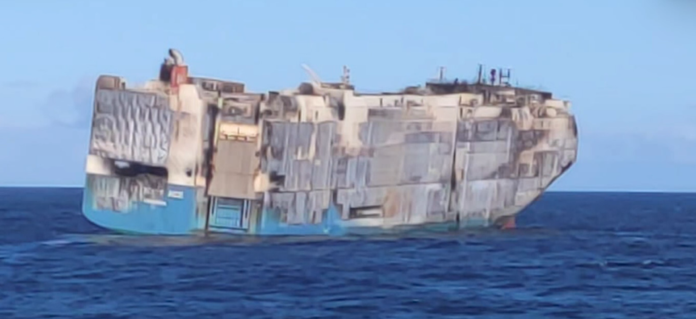
-
Record-low vessel losses as shipping navigates challenges
-
54 large ships lost worldwide last year, down 57% from past decade, according to “Safety & Shipping Review 2022”
-
South China, Indochina, Indonesia and the Philippines top global hotspots
-
Russian invasion of Ukraine has led to loss of life/vessels, worsening of crew crisis, trade disruption, sanctions burden, and cost and availability of bunker fuel
-
Fires on containership and car carrier incidents leading to oversized losses becoming more frequent
Record-low vessel losses were recorded at 54 last year, a 10% fall from 65 a year earlier and representing a 57% drop from 127 in 2012. Given that in the early 1990s, the global loss exceeded 200 ships yearly, total losses in 2021 were at a record low.
Russia’s invasion of Ukraine, however, has caused widespread disruption in the Black Sea and elsewhere, exacerbating ongoing supply chain, port congestion, and crew crisis issues caused by the Covid-19 pandemic, a marine insurance industry executive says.
Marine insurer Allianz Global Corporate & Specialty SE assesses the performance of the industry that carries 90% of world trade in its “Safety & Shipping Review 2022”. The study analyzes reported losses and casualties (incidents) involving ships over 100 gross tons.
“The shipping sector has demonstrated tremendous resilience through stormy seas in recent years, as evidenced by the boom we see in several parts of the industry today,” says Capt. Rahul Khanna, global head of Marine Risk Consulting at AGCS.
“Meanwhile, the increasing number of problems posed by large vessels, such as fires, groundings and complex salvage operations, continue to challenge ship owners and their crews,” he added.
The 2021 total losses are made more impressive by the global fleet having an estimated 130,000 ships today, versus some 80,000 thirty years ago. This reflects increased focus on safety and better ship design, technology and regulation.
The report says there have been 892 total ship losses in the past decade with the maritime region of South China, Indochina, Indonesia and the Philippines being the global loss hotspot, accounting for one in five losses in 2021 (12 ships) and one in four over the past decade (225), driven by high trade levels, congested ports, older fleets, and extreme weather.
Cargo ships made up 27 or half of vessels lost in the past year and 40% in the past decade. Foundering (sinking) was the main cause of 60% or 32 vessels lost last year.
Shipping casualties or incidents rose, with the British Isles having the most at 668 out of 3,000. Machinery damage accounted for over one in three of 1,311 incidents globally, followed by collision (222) and fires (178). The number of fires increased almost 10%.
Shipping industry challenges
Ukraine impact: Shipping has been affected on many fronts by Russia’s invasion, with loss of life and vessels in the Black Sea, disruption to trade, and the growing burden of sanctions. It also faces challenges to day-to-day operations, with knock-on effects for crew, the cost and availability of bunker fuel, and growing cyber risk potential. Security agencies continue to warn of a heightened prospect of cyber risks for the shipping sector such as GPS jamming, Automatic Identification System (AIS) spoofing and electronic interference.
“The insurance industry is likely to see a number of claims under specialist war policies from vessels damaged or lost to sea mines, rocket attacks and bombings in conflict zones,” explains Justus Heinrich, global product leader, Marine Hull, at AGCS. “Insurers may also receive claims under marine war policies from vessels and cargo blocked or trapped in Ukrainian ports and coastal waters.”
Fires on board: In the past year, fires on board the roll-on roll-off (ro-ro) car carrier Felicity Ace and the container ship X-Press Pearl both resulted in total losses. There have been over 70 reported fires on containerships alone in the past five years. “Too often, what should be a manageable incident on a large vessel can end in a total loss. Salvage is a growing concern. Environmental concerns are contributing to rising salvage and wreck removal costs,” says Marine Risk’s Khanna.
Post-pandemic challenges: While Covid-19 resulted in few direct marine insurance claims, the subsequent impact on crew welfare, the shipping boom and port congestion raise potential safety concerns. Demand for crew is high, yet many skilled and experienced seafarers are quitting. A serious shortfall of officers is predicted within five years due to low morale over commercial pressures, compliance duties and workloads.
Shipping bottlenecks and port congestion: Covid-19 measures in China, a surge in consumer demand and the Ukraine war have contributed to unprecedented port congestion that puts crews, port handlers and facilities under pressure. Outbreaks in China resulting in the staggered lockdown in Shanghai is compounding ongoing supply/demand pressures for shipping, leading to port congestion, higher freight fees and longer transit times.




